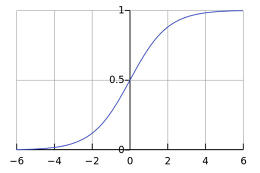This Former Googler Used Burnout To Reignite Her Career
I was midway into my five-year tenure at Google when I found myself curled up on the floor of a small phone room, unable to muster the strength to reach my arm up to the top of the desk, pick up the phone, and cancel my next back-to-back meeting. I felt light-headed and nauseous.
This moment was a byproduct of my success. I had ascended to the ranks of people management at 24 years old, which now placed meetings, strategy decks, and performance reviews within my purview. Although this had been my dream, I had suddenly reached a professional plateau and was stumbling quickly toward burnout. My body had gone into protest. “The way you are working isn’t working,” it said—yelled—to me.
In hindsight, it wasn’t just the way I was working. It was what I was working on. The “Peter principle,” a tongue-in-cheek management concept that asserts people are promoted to their level of incompetence—can also apply to how fulfilled we feel at work, especially if we’re following a path marked by “shoulds.” Many people feel stifled by the pressure (and outdated assumption) that the only route to career satisfaction is to ascend higher and higher until they’ve reached the top of the pyramid.
Although I wasn’t struggling in my role, I was struggling to see how this job, and the role of manager more specifically, fit into my strengths and career goals. I’d hit a point in my career where I realized the corporate path I was on wasn’t going to get me where I ultimately wanted to go, which was to become a full-time author and speaker. The challenge, first, was to pick myself off the floor of Google’s phone room. And the second was to figure out what to do next.
Your Plateau Isn’t A Problem, It’s A Sign Of Progress
For many, it’s the experience of continually picking up new things and meeting fresh challenges that keeps us going, making the inevitable plateau of success uncomfortable. But that plateau isn’t wrong or bad—it’s not an indication that you’ve failed. It’s a sign that you’ve succeeded, and now have to sort out what comes next.

The sigmoid function (or “S-curve”) is a mathematical model that tech researchers often draw upon. It maps progress over time, and it also applies to learning and change. When drawn on a graph, the curve resembles an S tilted forward. Many natural processes follow this pattern: a slow start, an accelerated middle, and leveling progress toward the end. In terms of career advancement or company growth, once you push past the plateau, you begin a new S-curve—one that builds upon the last.
Plateaus, in other words, are a natural part of the change cycle. To reject them, and punish ourselves for feeling bored or stagnant or unhappy, is to reject new information entering our awareness.
Dismissing periods of career deceleration at the top of the curve would be to prevent the race car driver from refueling, changing tires, and taking a drink of cool water at a pit stop. Just as we prune trees to stimulate growth, or start controlled fires so new flora and fauna can flourish, plateaus are natural recharging mechanisms we can use in order to build—intentionally—toward something new.
Burnout Showed Me My Next Move
In my case, that meant making the difficult decision to leave Google. I’d spent five and a half years at the company by the time my first book came out, in 2011, and was ready to pursue a more uncertain path but one that felt like a better day-to-day fit for my strengths and interests. My burnout and career plateau were signals that it was time for me to take some measured risks. I was already involved in coaching and career development at Google, so pivoting to launch my own business around the same functions felt like the natural next step to take.
Some people optimize their careers to get rich. When they do, we call them “high net worth” individuals. But people who we can think of as high net growth (and, ultimately, high net impact) often aren’t willing to stay stalled for long—at least not if they have the economic ability to choose otherwise. For me, anyway, I was finally ready to accept failure if I quit Google and failed to make it on my own, because I knew I would always regret not trying.
Even though I’ve had many ups and downs since as a solopreneur, I’m now celebrating over five years in business for myself. I loved my time at Google—it was the best five-year MBA I could ask for—but I haven’t once regretted leaving, no matter how low my bank account balance has dipped at times.
How To Pivot
Here’s how I’ve learned to pivot out of a career plateau in order to move toward something new and more challenging.
1. Double down on what’s already working. The biggest mistake most people make is looking too far outside themselves for answers. You know the plateau means that one or more areas of your work feels stalled. But what’s working? And how can you do more of it? Ask yourself: What are your biggest strengths? Within your current role, what projects make you lose track of time? Once you’ve identified the elements that you want to keep, you can put a pin in your desired destination: What does success look and feel like one year from now?
2. Next, look for ways to close the gap between where you are now and where you want to end up. You don’t need to have every step mapped out ahead of time—but you need to do some legwork to know which foothold to step toward next. It can be simple: Meet with people who are doing things you want to do and ask them how they got there. Identify the next set of skills and expertise you’ll need to develop. But don’t just think tactically. What are you curious about? Who do you admire? What next steps are most exciting to you? What would you love to become the go-to expert for one year from now?
3. Run small pilot experiments. Now you need to test your hypothesis about what’s going to be a good move for you next. A good pilot should test three criteria:
- Enjoyment: Do you actually like this new area?
- Expertise: Can you become an expert at it, and do you want to take the time and trouble to master it?
- Expansion: Is there market opportunity for you to do more of this?
Every small pilot will inform the next experiment after that. And keeping your experiments small can take the pressure off of “solving” all the reasons why you plateaued in one fell swoop, and instead help you build incrementally toward your destination.
In his book Wabi-Sabi for Artists, Designers, Poets, and Philosophers, Leonard Koren writes, “While the universe destructs it also constructs. New things emerge out of nothingness.” The plateaus in our lives, the moments we feel confused, stuck and uncertain, can also be our most instructive. The empty feeling of not knowing what’s next is as valuable as what eventually fills it.
Hitting career plateaus and the experience of burning out—and our laid-out-on-the-floor-of-the-phone-room moments—are waiting for us to stop judging them, and start transforming them instead.
Jenny Blake is a career and business strategist and international speaker who helps people build sustainable, dynamic careers they love. She is the author of Pivot: The Only Move That Matters Is Your Next One. Learn more about the book at PivotMethod.com. Listen and subscribe to the Pivot Podcast, and follow Jenny on Twitter @Jenny_Blake.
Fast Company , Read Full Story
(8)













